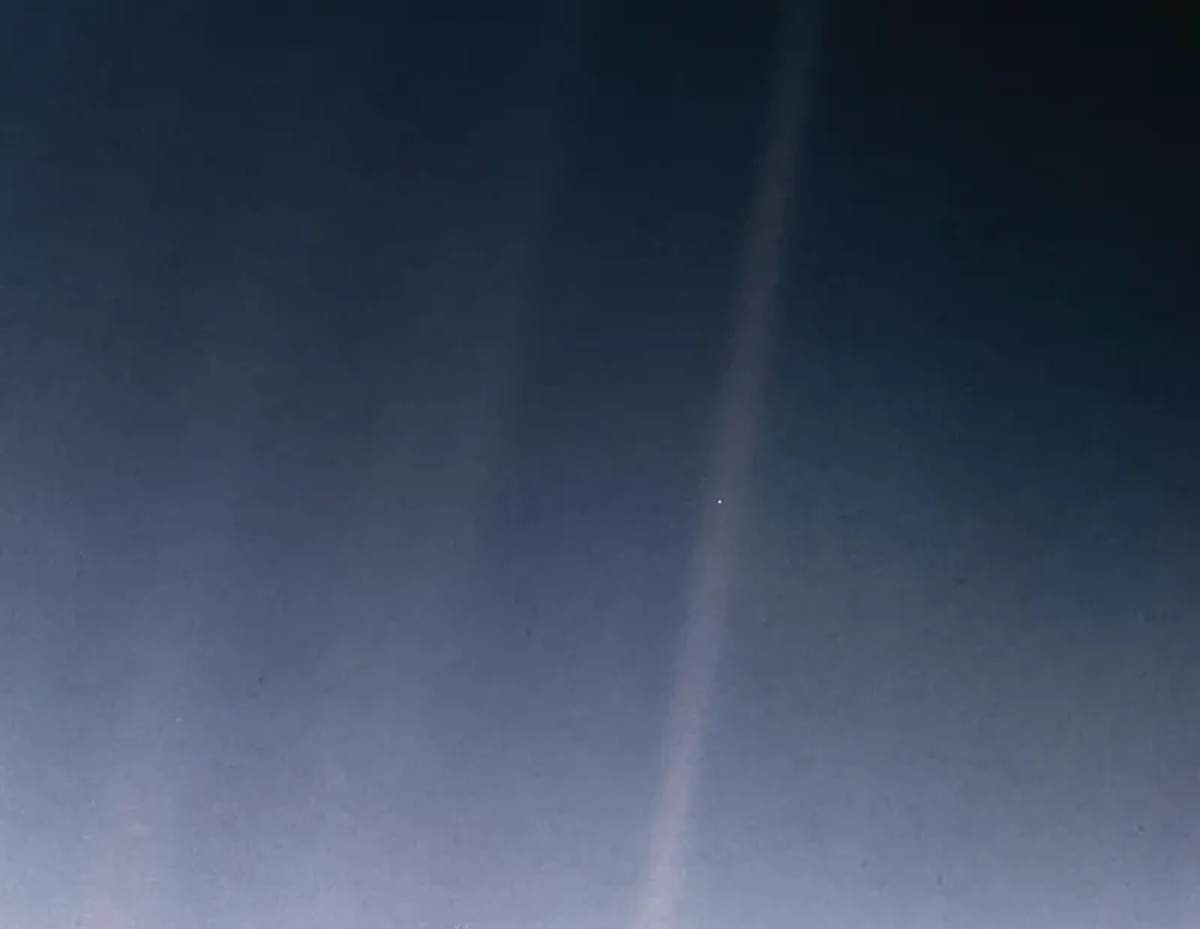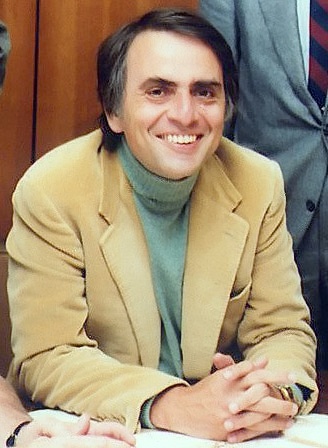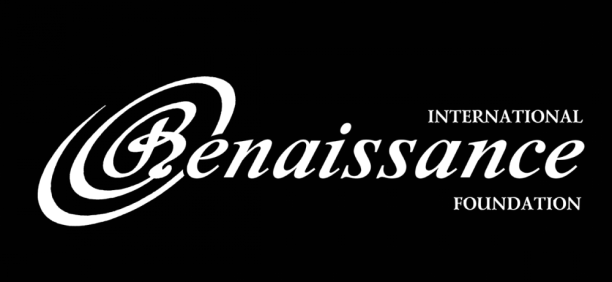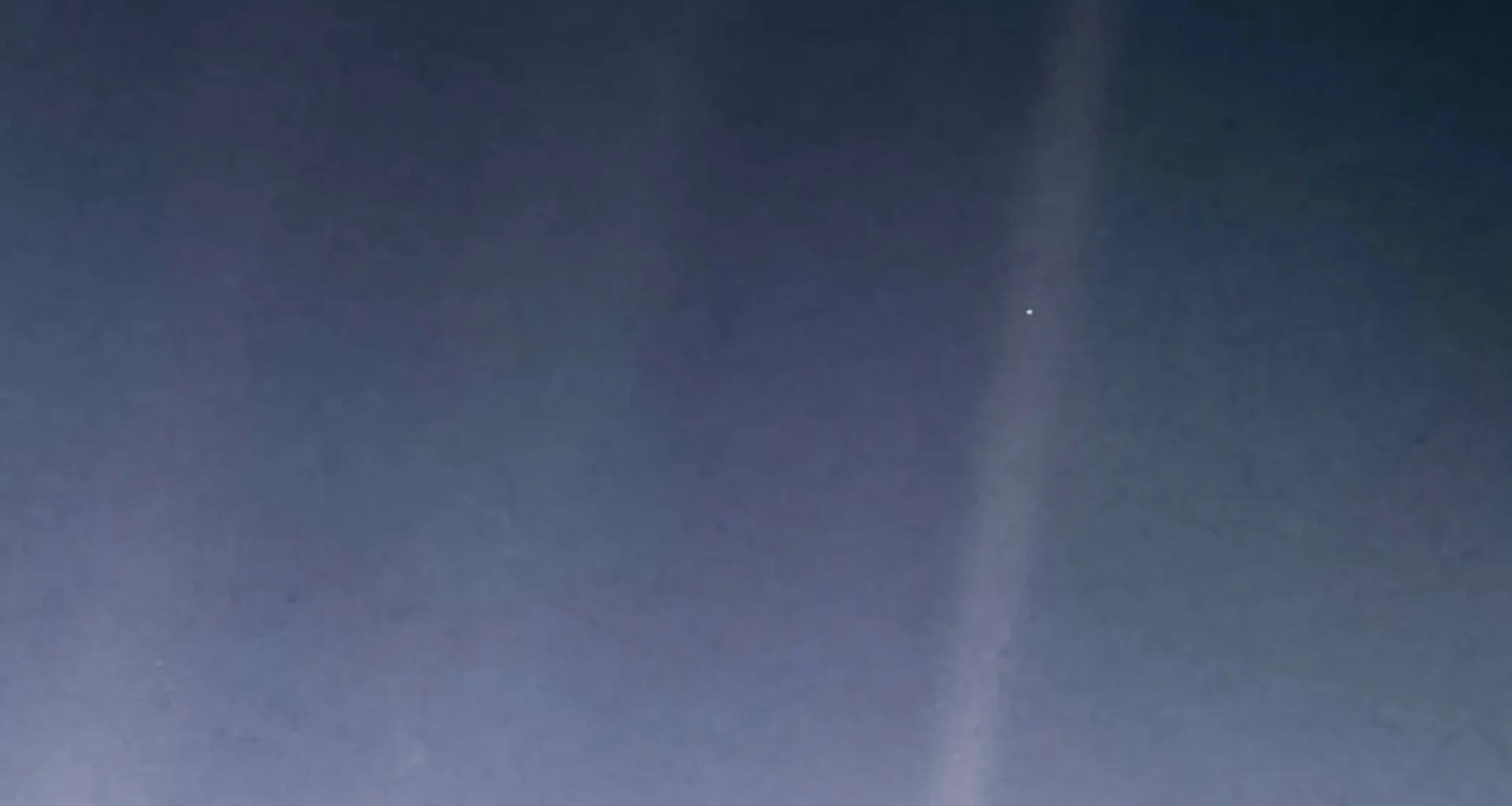As 2024 draws to a close, we remember two voices that still echo from the edge of our solar system: Jimmy Carter and Carl Sagan. While Carter’s words travel aboard Voyager 1, it was Sagan – the son of Ukrainian Jewish immigrants – who gave humanity its most humbling self-portrait: the pale blue dot.
Sagan’s parents fled what is now Ukraine for Brooklyn, where he was born in 1934. His father Samuel came from Kamianets-Podilskyi, his mother Molly Gruber from Sasiv near Lviv. Had they remained, they would have been lost to the Holocaust — and with them, one of humanity’s great cosmic perspectives.
Sagan was an outspoken advocate against the proliferation of nuclear weapons, developing the term in 1983 of a “nuclear winter” if these weapons were launched by the US and USSR. The fact that the successor state of the USSR, Russia, threatened the use of such weapons against his native Ukraine or tried to weaponize the Zaporizhziia nuclear facility would cause him equal alarm if he were alive today.
It was Carl Sagan’s suggestion that the spacecraft Voyager 1 turn around for one last look at its home planet on 14 February 1990, timed for a cosmic Valentine’s Day.

At that point, it was 6.4 billion kilometers (4 billion miles) away and was about to leave our planetary arena for the outer limits of the solar system, carrying a message from the Earth, including from then-former President Carter.
While Carter has recently passed, his voice carries on in the universe:
“This is a present from a small distant world, a token of our sounds, our science, our images, our music, our thoughts, and our feelings. We are attempting to survive our time so we may live into yours. We hope someday, having solved the problems we face, to join a community of galactic civilizations. This record represents our hope and our determination, and our goodwill in a vast and awesome universe.”
The V2 missile launched by Germany during World War II was the first human-made object to enter outer space. That same technology was used by the US and USSR to launch satellites into outer space. No human-made object has traveled so far, and it still transmits data back to Earth.

In 1990 Voyager captured our planet as a tiny point of light, a “Pale Blue Dot,” demonstrating its ephemerality in the vastness of space. Four years later, Sagan wrote the book of the same, most known for its famous words in the prologue.
We added an addenda [indicated with brackets] to demonstrate that his words are just as powerful in 2024, 30 years later. As 2024 comes to an end, this speech is meant to give hope to those dispossessed by conflict. For some, the pale blue and yellow flag might represent either the Ukrainian and/or European Union flag.
Carl Sagan was instrumental in the climate movement in the 1980s, raising concerns about global warming in the US Congress. This sentiment is evident in his monologue. The earth’s existence might be jeopardized if Trump withdraws again from the Paris Climate Accords, a far cry from Jimmy Carter, who had installed solar panels in the White House.
Carl Sagan, Pale Blue Dot, 1994
Look again at that dot. That’s here. That’s home. That’s us.
On it everyone you love, everyone you know, everyone you ever heard of, every human being who ever was, lived out their lives.
[Look again at Gaza and Georgia. Syria and Ukraine. Lebanon and Sudan.]
The aggregate of our joy and suffering, thousands of confident religions, ideologies, and economic doctrines, every hunter and forager, every hero and coward, every creator and destroyer of civilization, [like Putin and Assad] every king and peasant, every young couple in love, every mother and father, hopeful child, inventor and explorer, every teacher of morals, every corrupt politician, [like Netanyahu, Trump, and Ivanishvili], every “superstar,” every “supreme leader,” every saint and sinner in the history of our species lived there–on a mote of dust suspended in a sunbeam.
The Earth is a very small stage in a vast cosmic arena, [and the Gaza Strip and Syria, Georgia Lebanon, and Ukraine are very small stages in a vast cosmic arena].
Think of the rivers of blood spilled by all those generals and emperors so that, in glory and triumph, they could become the momentary masters of a fraction of a dot.
Think of the endless cruelties visited by the inhabitants of one corner of this pixel on the scarcely distinguishable inhabitants of some other corner, how frequent their misunderstandings, how eager they are to kill one another, how fervent their hatreds.
Our posturings, our imagined self-importance, and the delusion that we have some privileged position in the Universe are challenged by this point of pale light. Our planet is a lonely speck in the great enveloping cosmic dark. In our obscurity, in all this vastness, there is no hint that help will come from elsewhere to save us from ourselves.
The Earth is the only world known so far to harbor life. There is nowhere else, at least in the near future, to which our species could migrate. Visit, yes. Settle, not yet. Like it or not, for the moment the Earth is where we make our stand.
It has been said that astronomy is a humbling and character-building experience. There is perhaps no better demonstration of the folly of human conceits than this distant image of our tiny world [or tiny Ukraine, Gaza or Georgia]. To me, it underscores our responsibility to deal more kindly with one another, and to preserve and cherish the pale blue dot, the only home we’ve ever known.
Editor’s note. The opinions expressed in our Opinion section belong to their authors. Euromaidan Press’ editorial team may or may not share them.
Submit an opinion to Euromaidan Press
Related:
- Euromaidan Press 2024: a year of breaking barriers
- What Syria means for Ukraine
- Should Ukraine have nuclear weapons? Philosopher Slavoj Žižek speaks out




